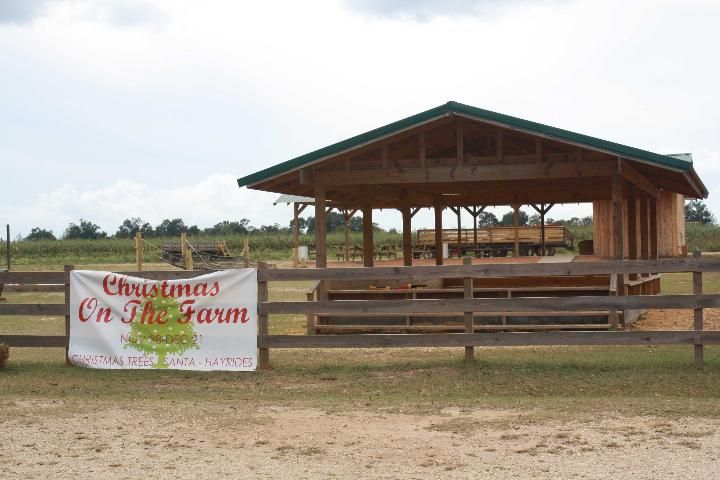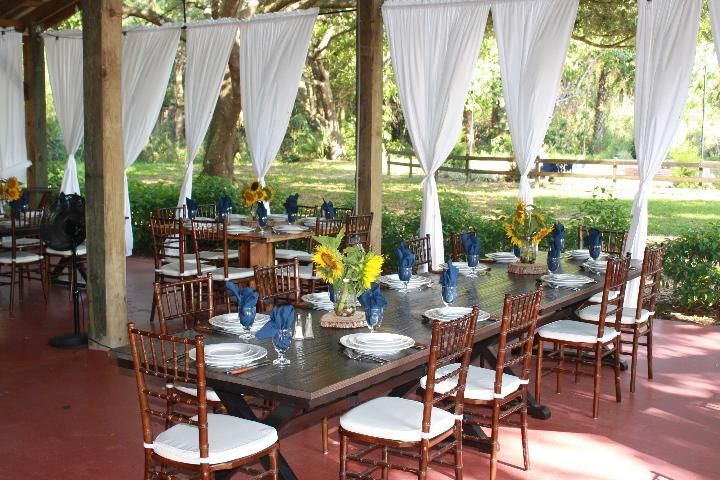Agritourism marries Florida's two largest industries, tourism and agriculture, to provide an on-farm recreational experience for consumers. Florida has experienced record tourism in recent years, with 105 million visitors spending more than $85 billion in 2015, according to VISIT Florida (2016). Although Florida trails many other states in the number of agritourism operations (USDA-NASS, 2018b), the number of Florida farms offering recreational experiences more than doubled from 281 in 2007 to 724 in 2012, according to the latest USDA Census of Agriculture data (USDA-NASS, 2018a). This document describes building codes relevant to Florida agritourism operations. A companion document, EDIS publication AEC623, Florida's Agritourism Laws (https://edis.ifas.ufl.edu/publication/wc285), discusses Florida statutes related to definitions, liability protections, and limits to regulatory authority of local governments over bona fide agricultural operations engaged in agritourism.
Note the legal definition of agritourism from Florida Statute 570.86 (2019):
'Agritourism activity' means any agricultural related activity consistent with a bona fide farm, livestock operation, or ranch or in a working forest which allows members of the general public, for recreational, entertainment, or educational purposes, to view or enjoy activities, including farming, ranching, historical, cultural, civic, ceremonial, training and exhibition, or harvest-your-own activities and attractions. An agritourism activity does not include the construction of new or additional structures or facilities intended primarily to house, shelter, transport, or otherwise accommodate members of the general public. An activity is an agritourism activity regardless of whether the participant paid to participate in the activity."
The authors would like to gratefully acknowledge the review contribution provided by the UF/IFAS Center for Agricultural and Natural Resource Law.
Introduction
Nonresidential farm buildings are exempt from the Florida Building Code as well as county and municipal codes under Florida Statute 604.50 (2019). Before the change in state law described below, some other farm buildings were still legally subject to the Florida Fire Prevention Code in certain situations (House, 2016); however, the situations in which the Fire Prevention Code applied were unclear.
The Florida Fire Prevention Code (FFPC) (F.S. 633) is a set of standards for fire safety and includes certain national fire code standards. These standards are enforced by local fire officials of various jurisdictions, including county, municipality, and special fire districts in the state. Local authorities are able to adopt more stringent fire safety ordinances than state or national rules; however, these local ordinances are not allowed to conflict with Florida's fire prevention and control law or other state law.
Prior to the 2016 change, agricultural structures were exempt from the FFPC if the occupancy was limited to 35 people and the building was not used by the public, used for direct sales, or used for educational outreach. The 2013 agritourism law, F.S. 570.967, added uncertainty in determining applicable requirements, because it included language preventing local governments from enacting new regulations to restrict agritourism activities, without specifically addressing the enforcement of existing regulations. The law was later changed to include enforcement of existing regulations that may restrict agritourism activities in 2016 (F.S. 570.854). As Florida agritourism operations have been expanding their capacity to host on-farm events, the lack of clarity on applicable fire codes resulted in difficulty for both fire officials charged with protecting the public and those hoping to expand their enterprises (UF/IFAS Extension Polk County, 2014).

Credit: M. E. Henry, UF/IFAS
2016 Changes to Florida's Fire Prevention Code, Florida Statute 633.202
In March 2016, changes to Florida's Fire Prevention Code, Florida Statute 633.202, passed to provide some clarity to these questions. The changes clarified exemptions and created different classes of agricultural buildings with different minimum fire code requirements as follows:
Structures Exempted from Florida Fire Prevention Code:
- Pole barns: defined as structures with at least 70% permanently open walls
- Nonresidential farm buildings used for 35 or fewer occupants
- Tents up to 900 square feet
Structures Exempted from Florida Fire Prevention Code but Subject to Annual Inspection and Rules to be Adopted by the State Fire Marshal:
- Class 1 buildings: those used for hosting events with 100 or fewer people up to twelve times a year and not used for lodging or residential purposes
- Class 2 buildings: those used to host activities with up to 300 people and not used for lodging or residential purposes
Structures Subject to Full Fire Code Requirements:
- Class 3 buildings: those used for housing, sheltering, or otherwise accommodating the general public
Agritourism-Specific Fire Rules
The law also directed the State Fire Marshal to develop more specific rules governing structures used for agritourism. These rules were adopted in April 2017. See the final rule (Rule: 69A-67.001 of the Florida Administrative Code [F.A.C.]) at https://www.flrules.org/gateway/ruleNo.asp?id=69A-67.001. The rule is also below with explanatory bullets added from statutes and sources referenced in the adopted rule.
"69A-67.001 Administration and General Requirements.
(1) The Division of State Fire Marshal hereby adopts fire safety rules for use by local fire officials when conducting the inspection of a new or existing structure located on a farm, as defined in paragraph 823.14(3)(a), F.S., that is used by the owner only for "agritourism activity" as defined in Section 570.86, F.S."
- Note the definition of a farm according to Florida Statute, as referenced above.
"823.14 Florida Right to Farm Act. (3) DEFINITIONS.—As used in this section: (a) "Farm" means the land, buildings, support facilities, machinery, and other appurtenances used in the production of farm or aquaculture products" (2019).
- Note the F.S. 570.86 definition of "agritourism activity," referenced earlier in this document.
"(2) Buildings outlined in paragraph 633.202(16)(b), F.S., are exempt from this rule."
- Florida Statute 633.202(16)(b) states, "Class 2: A nonresidential farm building that is used by the owner for agritourism activity with up to 300 persons occupying the structure at one time. A structure in this class is subject to annual inspection for classification by the local authority having jurisdiction. This class is not subject to the Florida Fire Prevention Code but is subject to rules adopted by the State Fire Marshal pursuant to this section."
"(3) Where a special amusement building is installed inside a nonresidential farm building regardless of occupant load, it shall meet the requirements as a special amusement assembly occupancy in the Florida Fire Prevention Code, as adopted in Rule Chapter 69A-60, F.A.C."
- According to the 2015 National Fire Prevention Association Code, Chapter 3.3.29.10, a special amusement building is defined as "a building that is temporary, permanent or mobile and contains a device or system that conveys passengers or provide a walkway around or over a course in any direction as a form of amusement arranged so that the egress path is not readily apparent due to visual or audio distractions or an intentionally confounded egress path, or is not readily available due to the mode of conveyance through the building or structure." This category often refers to haunted houses.
- Special amusement buildings have to comply with "special amusement occupancy." Fire code classifies buildings into "occupancies" according to what they are used for. An "Assembly Occupancy" refers to a place that 50 or more people gather for a variety of reasons, including entertainment as well as worship, eating, or waiting for transportation. In the case of a "special amusement building," the use of the building is considered an assembly occupancy regardless of the number of people (occupant load), according to Section 6.1.2.1 of the National Fire Protections Association Code.
- Special amusement assembly occupancy code requires protections such as automatic sprinklers, smoke detectors, alarms, and exit markings, as well as specifications for protections required for features such as pyrotechnics and cooking equipment.
- Those interested in installing a special amusement building may access the Florida Fire Prevention Code, referenced later in this document, but are advised to consult with local fire officials to best interpret these requirements.

Credit: M. E. Henry, UF/IFAS
Reasonable Alternatives
Another significant change to Florida Statute 633.202 allows local fire officials some leeway in applying the fire code to existing buildings. The new language acknowledges that following some fire code provisions line by line may be impractical in existing agricultural buildings and allows fire officials to use reasonable alternatives provided in a national fire protection publication, NFPA 101A: "Guide on Alternative Approaches to Life Safety." This publication is available online at https://www.nfpa.org/codes-and-standards/all-codes-and-standards/list-of-codes-and-standards/detail?code=101A.
Summary
In summary, changes to F.S. 633.202 and subsequently adopted rules clarify code requirements and exemptions for nonresidential farm buildings used in agritourism. Nonresidential farm buildings are exempt from the Florida Building Code as well as county and municipal codes but may be subject to the Florida Fire Prevention Code when used for agritourism. Local authorities are able to adopt more stringent fire safety ordinances than state or national rules; however, these local ordinances are not allowed to conflict with Florida's fire prevention and control law or other state law.
Pole barns, nonresidential farm buildings used for 35 or fewer occupants, and tents up to 900 square feet are exempt from the Florida Fire Prevention Code. Nonresidential farm buildings used for hosting events but not for lodging or residential purposes are classified by the number of people and events hosted. Those used for events with 100 or fewer people up to twelve times a year are subject to annual inspection but exempted from the Florida Fire Prevention Code. Nonresidential farm buildings used to host activities with up to 300 people are subject to annual inspection but are exempt from the Florida Fire Prevention Code. These are exempt from the Division of State Fire Marshal fire safety rules when used by the owner only for "agritourism activity." If a "special amusement building," such as a haunted house, is installed inside a nonresidential farm building, it is subject to the special assembly occupancy requirements of the Florida Fire Prevention Code, which require protections such as sprinklers. Class 3 buildings are those used for housing, sheltering, or otherwise accommodating the general public and are subject to the full fire code requirements.
Proactive Emergency Training
Agritourism participants expect safe conditions during their visit and operators are advised to evaluate their operations for potential hazards, including fire. Crowd Manager Training is a two-hour online course offered through Fire Marshal Support Service and supported and endorsed by the National Association of State Fire Marshals. The training includes footage from a 2003 fire at the Station nightclub in Rhode Island, in which 100 people died at a concert. Similar footage is available on YouTube and is a powerful demonstration of the deadly conditions that can quickly develop in the case of a fire. See more about the training at https://crowdmanagers.com/about/.
Resources
Full text of the 2024 Florida Statutes 633.202 Section 16: http://www.leg.state.fl.us/statutes/index.cfm?mode=View%20Statutes&SubMenu=1&App_mode=Display_Statute&Search_String=633.202&URL=0600-0699/0633/Sections/0633.202.html
The Florida Fire Prevention Code may be viewed online at https://www.nfpa.org/codes-and-standards/all-codes-and-standards/free-access?mode=view
View the National Fire Protections Code Standards for Special Amusement Occupancy (Section 20.1.4) via the NFPA document viewer, available at https://www.nfpa.org/codes-and-standards/all-codes-and-standards/list-of-codes-and-standards/detail?code=1
References
2013 Florida Statutes 570.96. (2013). Retrieved from https://www.flsenate.gov/Laws/Statutes/2013/570.96. Accessed 6/19/17.
Florida Statutes 570.85–89. (2019). Retrieved from http://www.leg.state.fl.us/statutes/index.cfm?App_mode=Display_Statute&Search_String=&URL=0500-0599/0570/0570PARTIIIContentsIndex.html. Accessed 6/19/17.
Florida Statutes 604.50. (2019). Retrieved from http://www.leg.state.fl.us/statutes/index.cfm?App_mode=Display_Statute&Search_String=&URL=0600-0699/0604/Sections/0604.50.html. Accessed 2/13/17.
Florida Statutes 823.14 Florida Right to Farm Act. (2019). Retrieved from http://www.leg.state.fl.us/Statutes/index.cfm?App_mode=Display_Statute&URL=0800-0899/0823/Sections/0823.14.html. Accessed 6/30/17.
House of Representatives Staff Analysis, Bill #: CS/CS/HB 431 Firesafety [sic]. (2016). Retrieved from https://www.flsenate.gov/Session/Bill/2016/0431/Analyses/h0431d.RAC.PDF. Accessed 2/14/17.
UF/IFAS Extension Polk County. (2014, Nov. 12). Charting a course for agritourism. Public Meeting and Panel Discussions. Auburndale, FL.
USDA-NASS. (2018a) Chapter 1: state level data table 6. Federal government payments and commodity credit corporation loans: 2012 and 2007. Table 7. Income from farm-related sources: 2012 and 2007. In Census of Agriculture: 2012 Census Volume 1. Retrieved from https://agcensus.library.cornell.edu/wp-content/uploads/2012-Florida-st12_1_006_007-1.pdf. Accessed 6/3/22.
USDA-NASS. (2018b). Chapter 2: state level data table 6. Income from farm-related sources: 2012 and 2007. In Census of Agriculture: 2012 Census Volume 1. Retrieved from https://agcensus.library.cornell.edu/wp-content/uploads/2012-Florida-st12_2_006_006.pdf. Accessed 6/3/22.
Visit Florida. (2016). 2016–17 marketing plan. Retrieved from https://www.visitflorida.org/media/24815/2016-17-marketing-plan.pdf. Accessed 2/13/17.